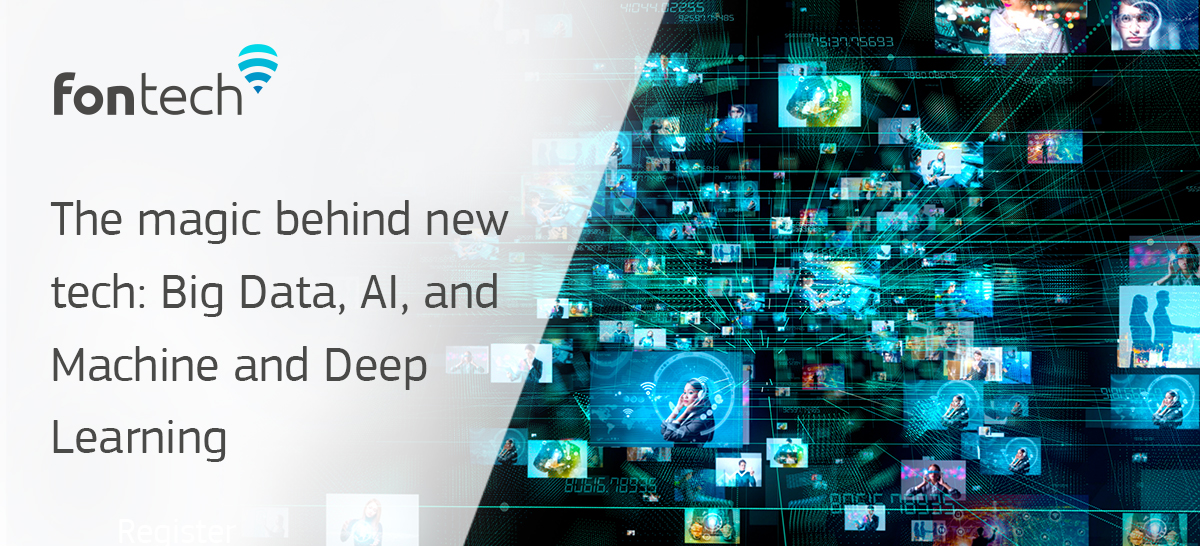The magic behind new tech: Big Data, AI, and Machine and Deep Learning
What is the difference between them?
As its name implies, Big Data usually refers to data that can’t be effectively processed with traditional applications due the challenge of capturing, storing, transferring, querying, and updating data in such large amounts. While there’s no singular definition for it, people often refer to the 3 V’s of big data: Volume (the size of the data), Variety (data from different sources or in different formats) and Velocity (the speed at which data is generated and at which it needs to be available for processing). A Big Data system should cover, at least, these first three dimensions and it should be defined by them.
But over the last five years, even more V’s have been added. Today, the most spread dimensions of big data are the 5 V’s which also include Veracity (trustworthiness of the data sources), and Value (usefulness, but also for my business model) which address the quality, rather than the technical aspects, of the gathered data.
Since the Big Data concept refers to the storage and fast processing of large amounts of data, it often uses analytics involving Artificial Intelligence (AI), Machine Learning and Deep Learning. Often, these terms are used interchangeably, but they’re not the same thing.
The AI field can be defined as a branch of computer science that aims to create intelligent machines. That is, machines that emulate human performance typically by learning, understanding complex concepts, getting to conclusions or engaging in dialogues with people.
On the other hand, Machine Learning refers to one of the branches of AI that is based around the idea that we should really just be able to give machines access to data and let them learn for themselves.
And last but not least, Deep Learning refers to a part of a broader family of Machine Learning methods based on learning data representations focused on Neural Networks, as opposed to task-specific algorithms. And of course, you might be wondering what a Neural Network is. In the ML field, a Neural Network or an Artificial Neural Networks (ANN) are computing systems inspired by the biological networks of nerves and neurons that constitute our human brain. This solution allows computers to learn from experience and understand the world in terms of hierarchy of concepts. Deep Learning is good for identifying objects in images and words in sounds. Researchers are looking to apply this concept in many other future applications to more complex tasks such as automatic language translation, medical diagnoses, marketing and numerous other important social and business problems.

And what can Big Data and AI do for WiFi networks?
Big Data analytics provide organizations with new business opportunities, and at Fontech, we definitely want to take advantage of these new technologies. In previous posts we’ve talked about our Connectivity Experience Solution (link), a solution that provides an always-best-connected experience. This solution is based on an SDK, the Connection Manager (that seamlessly connects users to WiFi), a QoE Manager that assesses and selects the best available connectivity option (among multiple WiFi networks or cellular), and Network Analytics to get insights on network performance.
Big Data is already being used for our QoE Manager. In order to select the best connectivity option, the QoE Manager assesses each available network in range based on a multivariable model, and gives each network quality indicator score. This model is based on both radio interface measurements and historical user connection data to estimate the real connection quality at a specific hotspot. This historical information is retrieved from our Network Curation System. This Big Data system compiles all the curated information that the QoE Manager on multiple devices has collected over time. Every new device connection provides additional information about the AP’s quality and contributes to its overall rating.
At Fontech, we’ll continue to explore new innovative technologies and to investigate their applications for WiFi networks. Subscribe to our blog and keep updated on our latest developments!
Make sure to follow us on Twitter and LinkedIn to keep up to date with the latest trends and opportunities, as well as corporate news.


